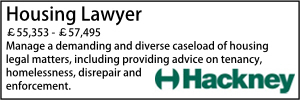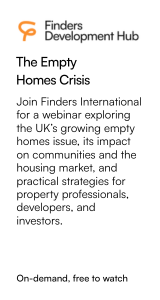Council fails in appeal over power to issue mother with community protection notice regarding anti-social behaviour of son
- Details
Justices in Staffordshire were right to conclude that on the proper construction of section 43 of the Anti-Social Behaviour, Crime and Policing Act 2014, a council had no power to issue a Community Protection Notice (“CPN”) in the name of a mother concerning the conduct of her child, the Divisional Court has ruled.
Staffordshire Moorlands District Council had appealed by way of case stated against a decision by Staffordshire Magistrates' Court on 22 July 2019 to allow an appeal by Mrs Sanderson against a CPN issued by the local authority to her in respect of the behaviour of her son X, a child.
In Staffordshire Moorlands District Council v Sanderson [2020] EWHC 962 Mrs Justice Andrews, who heard the case with Lord Justice Hickinbottom, noted that although the question was posed in the specific context of parent and child, both counsel had accepted that the construction of s.43 adopted by the Justices would preclude the service of a CPN on person A in respect of anti-social behaviour by person B in any circumstances in which A might be in a position to, and expected to, exert control over B.
The background to the case was that Staffordshire Moorlands issued a CPN to Mrs Sanderson on 15 March 2019 when X was nearly 15 years old.
The CPN followed the service of a written community protection warning on Mrs Sanderson on 19 February 2019. The warning, addressed to Mrs Sanderson, stated that an officer of the appellant was satisfied that:
"Your conduct and behaviour at and in the vicinity of Blythe Bridge, Staffordshire is having a detrimental effect on the quality of life of others in the locality caused by your son, X, engaging in the following behaviour."
There then followed a list of anti-social behaviour attributed to X, including getting involved in a fight, assaulting another schoolboy, setting fire to a public bench and refusing to leave a convenience store when instructed to do so by others. The warning continued:
"this warning must be construed as formal notification to address the conduct identified."
There then followed a list of actions that Mrs Sanderson was required to take to prevent X from carrying out further acts of anti-social behaviour.
The CPN referred to the written warning. It said that the warning:
"Specified that the detriment directly related to you failing to control the behaviour of your son, X, in and around Blythe Bridge, Staffordshire. Furthermore, you were given due notice that your son had engaged in specific incidents which had a detrimental impact on those in the locality."
It then listed those incidents and added a further incident that had allegedly occurred since the warning was issued. It said that in the light of this the appellant was satisfied:
"That your persistent and/or continuing unreasonable conduct in the area of Blythe Bridge, Staffordshire as described above and in the written warning is having a detrimental impact on the quality of life of those living in the locality."
The action that the CPN required Mrs Sanderson to take, for a period continuing until midnight on 12 April 2020, was this time expressed in terms of taking reasonable steps to prevent X from doing various things, including using offensive words or behaviour to any person in any public place or place to which the public has access in the Staffordshire Moorlands area, and "unlawfully assaulting" any person anywhere in the Staffordshire Moorlands.
Mrs Sanderson appealed to the Justices pursuant to s.46 of the 2014 Act on two grounds, namely that the notice was issued to the wrong person, and that it contained unreasonable requirements.
The Justices allowed the appeal on the basis that the appellant had no power to issue a CPN in the name of Mrs Sanderson in respect of the conduct of her son. They relied on the wording of ss.43(1) and 43(5) of the 2014 Act and supported their reasoning by reference to s.44 (“Occupiers of Premises etc.”).
Mrs Justice Andrews and Lord Justice Hickinbottom concluded that the Justices had construed s.43 correctly.
Mrs Justice Andrews found that:
- The interpretation adopted by the Justices did not turn on nice distinctions of causation, as counsel for Staffordshire Moorlands put it, but rather on the fact that the conduct that was really being complained of as causing a detrimental effect was the conduct of X, and not the "unreasonable and persistent" conduct of Mrs Sanderson in failing to control the conduct of X.
- S.43(1) provides that where a CPN is served on an individual the unreasonable conduct of that individual must have a persistent and continuing detrimental effect on those in the locality. “That is easy enough to understand. It seems clear that Parliament intended that a CPN (and any prior warning) should be served on the person who is engaging in the anti-social behaviour, with a view to getting that person to desist, ultimately on pain of a criminal sanction.”
- The clear inference from the existence of s.44 was that Parliament intended that an individual's liability for the anti-social behaviour of someone else was “to be limited to circumstances where that individual can reasonably be expected to control or effect the conduct complained of and it takes place on premises that the individual owns, leases, occupies, controls or maintains.”
- The purpose of the 2014 Act was to stop anti-social behaviour. However, there was nothing anywhere to suggest that its purpose was to enforce control over anti-social behaviour committed by another irrespective of whether the person with responsibility was a parent or someone else such as a schoolmaster, a scout leader “or even the local authority itself ( e.g. if the child committing the anti-social acts is a "looked after" Child under s.20 of the Children Act 1989)”.
- Parliament had chosen not to attribute the anti-social behaviour of one person to another even if that other person might have some power to control them unless the behaviour in question fell within the scope of s.44 and could be treated as if it were the behaviour of the other person for that reason.
- In the present case it was X's behaviour outside school and the parental home that was having a detrimental effect of a persistent nature on the quality of life in the neighbourhood. That was the behaviour that was the real target of the Notice, “not his mother's failure to take steps to stop him from behaving in that way”.
- Parliament had decided that CPNs and associated warnings may only be served on individuals aged 16 or over. It had made specific and express provision for the courts, rather than local authorities, to issues orders against parents of children and young persons who are proved to have engaged in anti-social behaviour. It had included in those power various checks and balances to ensure that such orders as were made were proportionate and do not interfere unduly with family life. “If s.43 of the 2014 Act empowered a local authority to issue a CPN against a parent in respect of their failure to control the anti-social behaviour of a child under 16, many of those other statutory provisions would be otiose.”
- Counsel for Staffordshire Moorlands had submitted that the extent to which a local authority was entitled to impose controls over personal relationships was entirely a policy matter for Parliament. Mrs Justice Andrews agreed but said that "if Parliament had intended to enable a local authority to serve a CPN on a parent to require them to control the anti-social behaviour of a child, and to face criminal penalties if they failed to do so, it could and would have made that clear, instead of using language which on its face only enables the local authority to serve a CPN on someone aged 16 or over in respect of their own anti-social behaviour".
Agreeing, Lord Justice Hickinbottom said: “As a jurisdictional matter, a CPN cannot be issued to a person such as a parent who may have a degree of control over a second person whose conduct falls within s.43 by reason of that degree of control alone.
“As my Lady has indicated, that conclusion does not, of course, mean that an individual might not be served with such a notice if, for example, he or she encourages or otherwise supports the relevant anti-social behaviour. That encouragement or support may in itself be anti-social behaviour and fall within conduct covered by s.43.”
The appeal was therefore dismissed.
09-12-2025 1:00 pm
11-12-2025 11:00 am




























